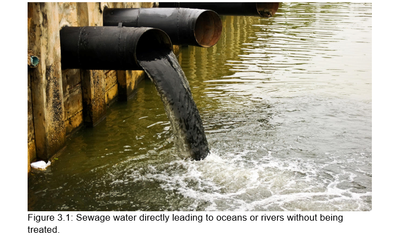Environment impact

Used water is wastewater. It comes from our sinks, showers, and toilets and from commercial, industrial, and agricultural activities. The term also includes stormwater runoff, which occurs when rainfall carries road salts, oil, grease, chemicals, and debris from impermeable surfaces into our waterways. More than 80 percent of the world’s wastewater flows back into the environment without being treated or reused, according to the United Nations; in some least-developed countries, the figure tops 95 percent. In the United States, wastewater treatment facilities process about 34 billion gallons of wastewater per day. These facilities reduce the amount of pollutants such as pathogens, phosphorus, and nitrogen in sewage, as well as heavy metals and toxic chemicals in industrial waste, before discharging the treated waters back into waterways. But according to EPA estimates, a study showed that more than 850 billion gallons of untreated wastewater are released by sewage treatment systems each year. (Dechak, 2019)
